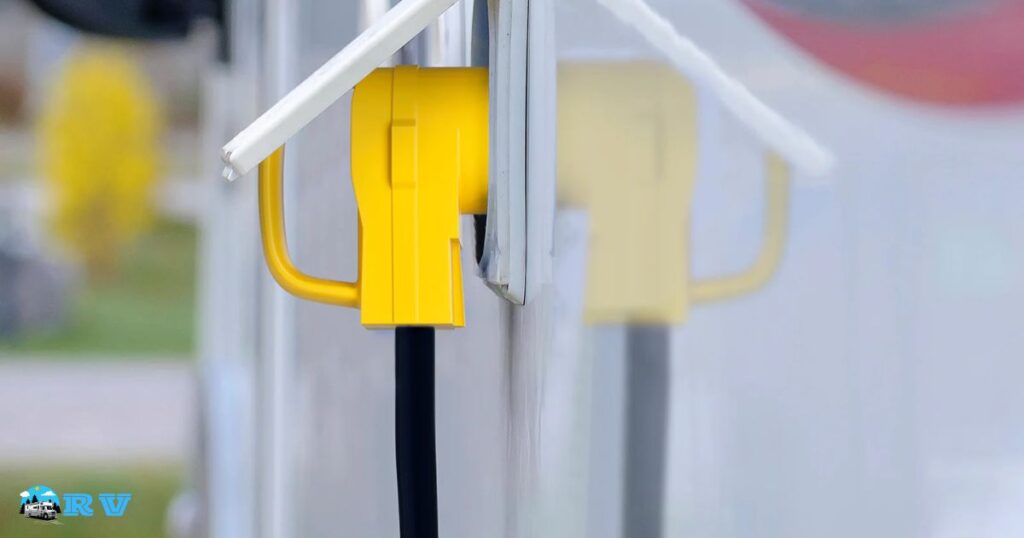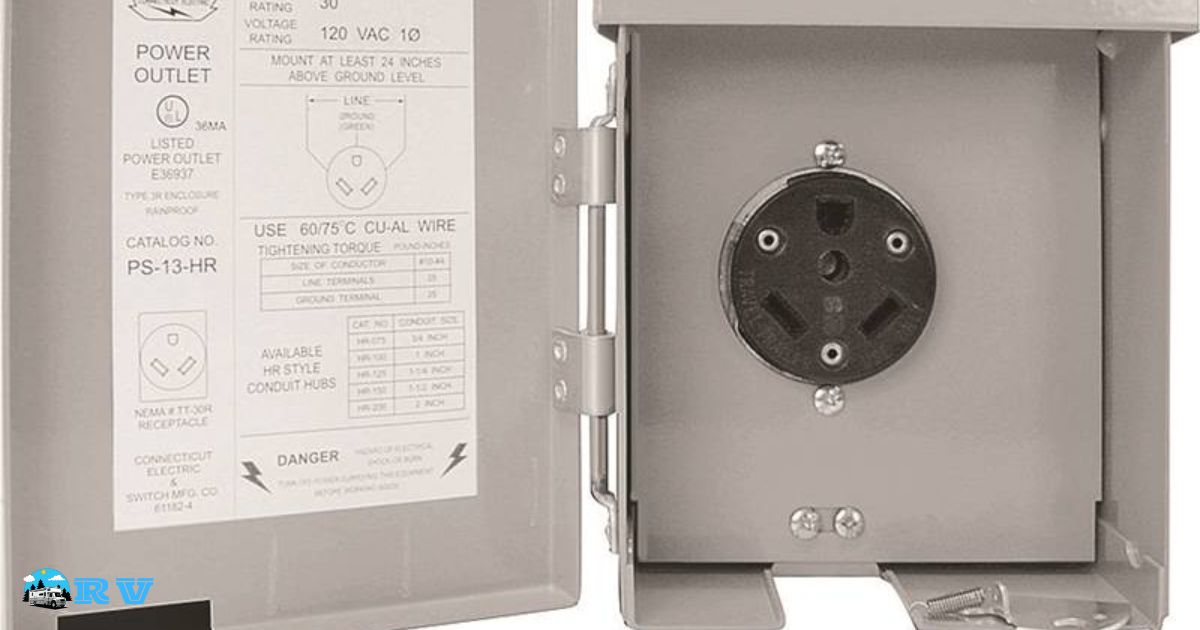Wire for a 30 amp RV outlet refers to the specific electrical wiring used to safely supply power to a recreational vehicle with a 30 amp electrical system. It plays a crucial role in ensuring that the electrical connection is capable of handling the RV’s power needs without overloading the circuit.
Have you ever wondered, what gauge wire for 30 amp RV outlet? Understanding the right wire gauge is essential to prevent overheating, fires, or electrical damage in your RV setup. Choosing the correct wire gauge is a critical step in ensuring the safety and reliability of your RV’s electrical system.
The gauge wire for a 30 amp RV outlet typically ranges from 10 to 8 AWG (American Wire Gauge). A larger gauge (lower number) like 8 AWG is preferred for longer distances to minimize voltage drop and ensure a stable power supply.
Understanding the Basics 30 Amp RV Outlet Requirements
When setting up a 30 amp RV outlet, it’s crucial to understand its electrical demands. These outlets require a specific type of wiring to handle the electrical load safely. A 30 amp RV outlet typically operates at 120 volts, which is standard for most RVs. This setup provides enough power for various appliances and electronics used in the RV.
The right wire gauge is essential for efficiency and safety. If the wire is too thin, it can overheat, posing a fire hazard. Conversely, overly thick wire is more expensive and harder to work with. Thus, finding the balance in wire thickness is key to a successful installation.
Selecting the Right Wire Gauge for 30 Amp RV Outlets
The appropriate wire gauge for a 30 amp RV outlet is usually 10-gauge. This thickness can safely conduct the necessary power without overheating. It’s a common standard recognized by most electricians and RV manufacturers.
Using a 10-gauge wire also ensures compliance with most local electrical codes. It’s important to remember that the wire gauge isn’t the only factor to consider. The length of the wire and the type of insulation also play a crucial role in safety and efficiency.
Safety Considerations Choosing Wire for 30 Amp RV Hookups

Selecting the right wire involves more than just picking the correct gauge. Safety is a primary concern when dealing with electrical installations. To aid in this, a simple table can illustrate key considerations:
| Factor | Importance |
| Wire Gauge | Must be appropriate (usually 10-gauge) to handle the electrical load without overheating. |
| Insulation Type | Should be suitable for outdoor use and exposure to environmental elements. |
| Wire Length | Longer wires may need a thicker gauge due to voltage drop over distance. |
| Local Codes | Compliance with local electrical codes ensures safe and legal installation. |
Using this table as a guideline can help prevent common mistakes. It’s also important to consult a professional electrician, especially if you’re unfamiliar with electrical work.
Each aspect of the table plays a critical role in the overall safety of the installation. For instance, the right insulation protects against weather and physical damage.
Electrical Code Guidelines for 30 Amp RV Wiring
Electrical codes provide a framework for safe installation. These guidelines vary by region but generally follow the National Electrical Code (NEC). For a 30 amp RV outlet, the NEC typically requires the use of 10-gauge wire.
It’s important to consult the local code requirements in your area. Some regions might have additional regulations or requirements. For instance, certain areas may require specific types of conduit or additional grounding for outdoor electrical installations.
Wire Types and Insulation for 30 Amp RV Connections
Different wire types offer varying levels of durability and resistance to environmental factors. For RV outlets, the wire should be resistant to moisture, temperature changes, and physical wear. A common choice is THWN-2 wire, which is heat-resistant and suitable for wet conditions.
The insulation of the wire is also a critical factor. Good insulation protects the wire from the elements and reduces the risk of short circuits or electrical fires. It’s advisable to choose a wire with robust insulation, especially for outdoor or semi-outdoor installations like RV outlets.
Installation Tips Wiring a 30 Amp RV Outlet
Proper installation is key to a safe and functional RV outlet. Start by turning off the power at the main breaker. Then, plan the route for the wire, avoiding areas where it could be damaged. It’s important to secure the wire along its path. Use clamps or conduit to protect the wire from physical damage.
Make sure the outlet box is weatherproof if it’s exposed to the elements. Always double-check connections to ensure they are tight and secure. Loose connections can lead to overheating and electrical hazards. After installation, it’s advisable to have a professional electrician inspect the setup to confirm it’s up to code and safely installed.
Troubleshooting Common Issues with 30 Amp RV Wiring
Even with careful installation, issues can arise. A common problem is a tripped breaker, which may indicate an overloaded circuit or a short. If this happens, unplug appliances and reset the breaker. If it trips again, there may be a wiring issue.
Another issue that RV enthusiasts often encounter is dealing with a 50 amp RV on 30 amp hookup situation. This can lead to a lack of power, even when everything seems correctly installed. This could be due to a bad connection or a problem with the RV’s internal wiring. In such cases, consulting with a professional is the best course of action.
Maintaining Your 30 Amp RV Outlet for Safe Operation
Maintaining your 30 Amp RV outlet is essential to ensure safe operation while enjoying your travels. Regular inspection and cleaning of the outlet are crucial to prevent dust, debris, or corrosion from causing electrical issues. Check the outlet’s wiring for any signs of wear or damage, such as frayed wires or loose connections.
If you notice any problems, it’s important to address them promptly to avoid potential hazards. In addition to visual inspections, consider investing in surge protectors and voltage regulators to safeguard your RV’s electrical system from power fluctuations at campgrounds.
FAQs
Can I use a smaller wire gauge for a 30 amp RV outlet?
Using a smaller wire gauge than recommended can lead to overheating and should be avoided.
What is the maximum distance for wire runs to a 30 amp RV outlet?
For a 30 amp RV outlet, the maximum recommended distance for wire runs is usually around 25-30 feet.
What type of wire should I use for a 30 amp RV outlet?
You should use RV-specific or at least outdoor-rated wire for safety and durability.
Do I need a dedicated circuit for a 30 amp RV outlet?
Yes, it’s essential to have a dedicated circuit for a 30 amp RV outlet to ensure safe and reliable power supply.
Conclusion
In conclusion, when it comes to choosing the right wire gauge for a 30-amp RV outlet, it’s essential to prioritize safety and efficiency. Using the correct wire size, which is typically 10-gauge for a 30-amp circuit, ensures that your RV receives a stable and reliable power supply without the risk of overheating or electrical hazards.
By following the recommended guidelines and consulting with a qualified electrician if needed, you can enjoy your RV adventures with peace of mind, knowing that your electrical setup is up to code and ready to power your travels. Remember, selecting the appropriate wire gauge is just one part of the installation process.
Properly installing the outlet, breaker, and ensuring a secure connection are equally important steps to ensure a safe and reliable power source for your RV. By paying attention to these details, you can enjoy your camping trips and RV adventures with confidence, knowing that your electrical system is well-suited for the job.











